[ad_1]
There’s a reason—beyond sheer popularity—why so many full-line carmakers have led with crossovers as they ramp up their lineups for the electric era: Sporty midsize sedans like the Hyundai Ioniq 6 require more push and pull to look right while delivering the aerodynamic efficiency that’s so important for driving range.
To fit thick battery packs under the passenger floor means pushing up the roofline and compromising proportions to compensate, or settling for a cabin that feels more cramped. On the other hand, traditional three-box sedans are compromised in the wind tunnel; it’s why so many automakers have settled for the tall-tail “kammback” form instead, with a hatchback instead of a trunklid.
Put the two together and it’s daunting. With sedans no longer the core of the auto market, it’s less surprising why so few automakers have tackled an electric sedan.
But Hyundai has threaded the needle and ended up with something jaw-droppingly unique in the Ioniq 6. The Ioniq 6 simultaneously solves the aero issue and treads new design ground, making other sedans look antiquated.
Hyundai’s early tease of range results might be enough to convince skeptics. The Ioniq 6 will bear a WLTP range rating of up to 382 miles, according to the automaker. Based on how the Ioniq 5 crossover has fared in the EPA cycle, versus the more optimistic European WLTP, that will land it very close to the Model 3 Long Range’s 358 miles.

2023 Hyundai Ioniq 6
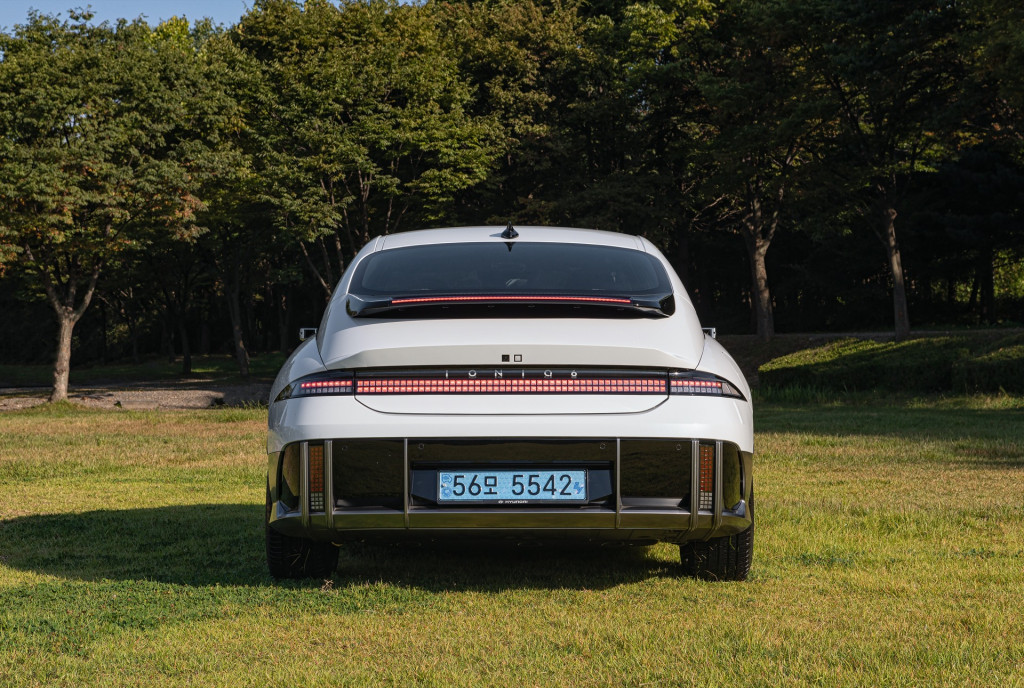
2023 Hyundai Ioniq 6
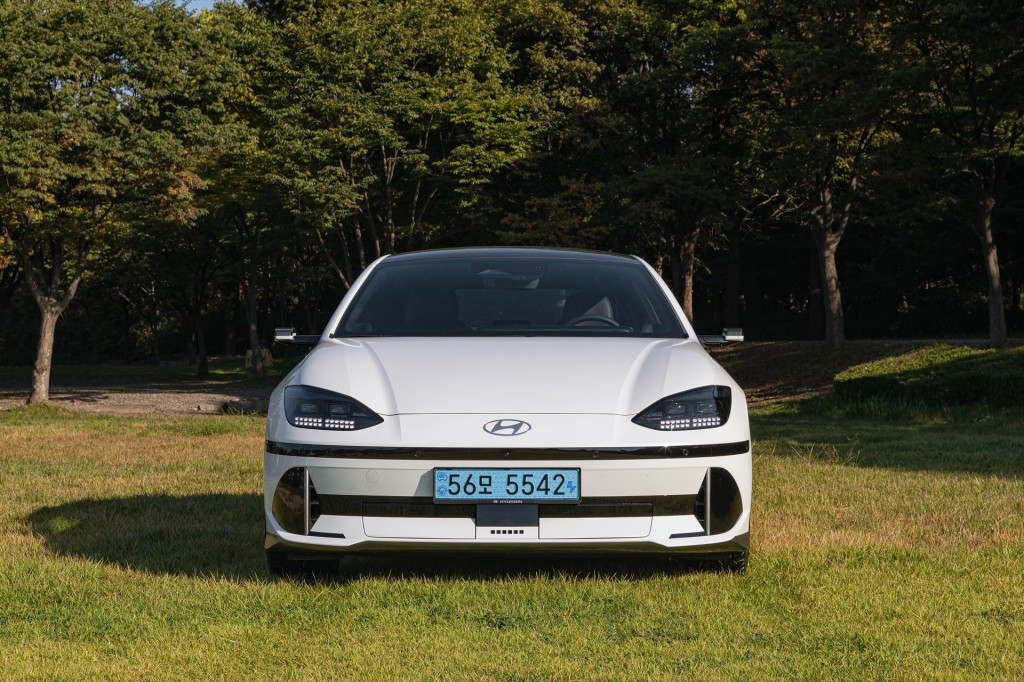
2023 Hyundai Ioniq 6
It’s a trendsetter, looks even better up close, and from first impressions, it suggests for the first time that there’s a car that one-ups the Tesla Model 3 in many respects. Just you wait.
One curve, many details
It would have been easy for the Ioniq 6 to mimic the best-selling Tesla Model 3, or to simply aping the Ioniq 5 hatchback that’s in ridiculously short supply. But Hyundai didn’t opt for either of those routes.
Hyundai calls the profile of the Ioniq 6 “one curve.” Side profile pics tend to show individual arcs, but in person it’s easy to figuratively lay a French curve across any portion of the car as a whole. The thing is curvy everywhere. Influences include the Stout Scarab and the Phantom Corsair, both from the 1930s; and the 1950 Saab 92; and a 1920s aviation aesthetic in this “streamliner.” Yet to anyone fluent in modern cars, it’s impossible not to see some Porsche influences in front and in back. Is that a whale tail?
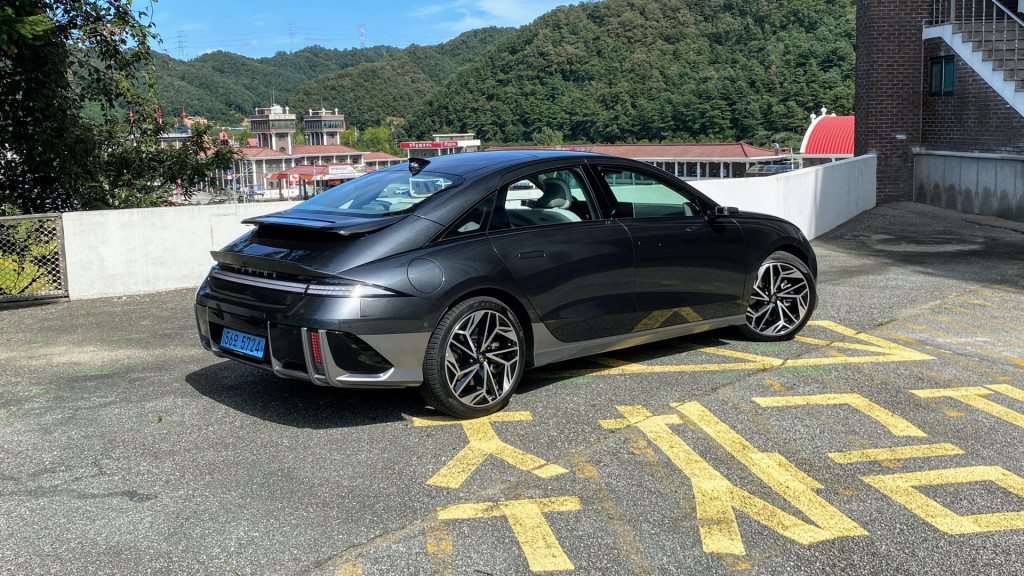
2023 Hyundai Ioniq 6 first drive – South Korea
Well, it’s a rear spoiler that plays a key role in the 0.21 coefficient of drag, making the Ioniq 6 Hyundai’s most aerodynamic production car ever. Modeled after the super-marine spitfire British World War II airplane, it’s one of those elements of beauty where engineering and design find the sweet spot. Don’t try removing the spoiler if you value your highway range. The aero advantages are also made possible by an active air flap at the lower front air intake, letting airflow through and around the front wheels—and, by the sound of it, a whole lot of modeling and wind-tunnel work.
On the outside, Hyundai’s so-called parametric pixel design details, the emphasis on lighting, and the slim door handles are about the only things in common with the Ioniq 5. That’s how Hyundai likes it, in an Ioniq lineup of models that will each make their own statement, including the boxy Ioniq 7 SUV that’s on the way as well.
No wasted space
The Ioniq 6 is the first sedan built from the company’s E-GMP dedicated electric vehicle platform. It’s also the first Hyundai model to offer over-the-air firmware updates for the full gamut of vehicle functions.
It rides on a 116.1-inch wheelbase and is 191.1 inches long, 74.0 inches wide, and 58.9 inches tall. In overall height, the Ioniq 5 is only about four inches taller than the Ioniq 6, but with them both at opposite sides of a garage you’d guess there’s more of a difference.
Hyundai has conceived each of the Ioniq models separately, with an emphasis on an interior “living space,” parametric pixel cues peppered throughout to unify the different looks, and sustainability in tech and materials.
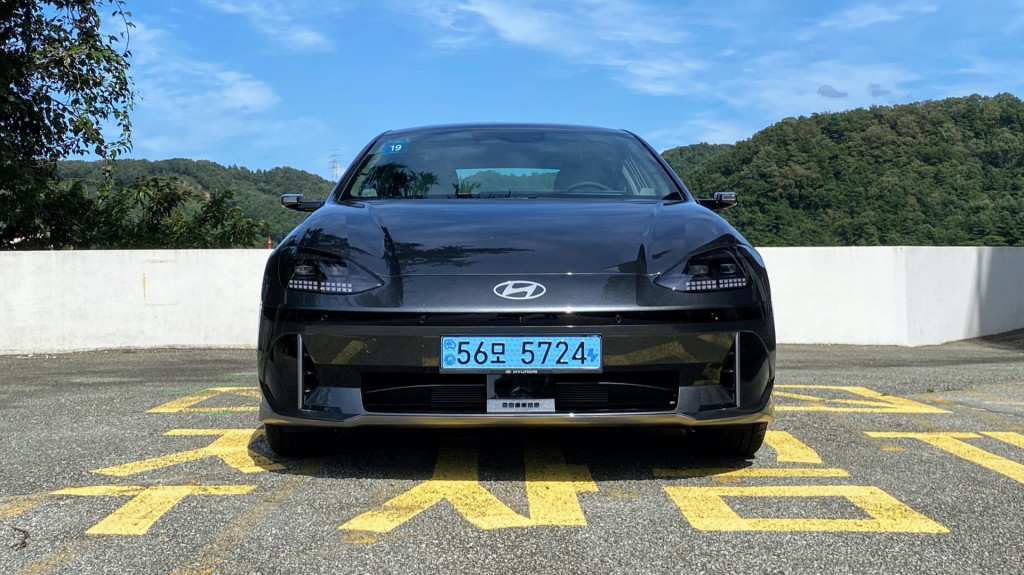
2023 Hyundai Ioniq 6 first drive – South Korea
According to Hyundai global design chief Simon Loasby, controlling the visual height of the car was very important. The broad arc that assures passenger space gets where it needs to be, but it starts very low in front and back.
Just as with the Ioniq 5, the dash is pushed forward more than in other vehicles, and the entire front floor space feels open and airy. Like the Tesla Model 3, there isn’t a lot of wasted space atop the dash, and from an upright driving position the hood pretty much disappears, leaving a great view ahead. Twin 12.3-inch displays stand upright in front of the driver—the one in the middle a touchscreen for infotainment, the one ahead for gauges—but they’re by no means in the way.
The skateboard platform and long wheelbase pay dividends in passenger space. The floor is flat throughout the cabin, bringing excellent leg room to the back seat, even when the front seat is back all or nearly all the way. Just don’t expect a lot of headroom; I (and anyone over six feet tall) was pressing my noggin against the headliner, requiring a hunched-forward position that would be acceptable for a trip across town but not a road trip. Up front, Hyundai adds a sturdy, two-tiered center console; it doesn’t move around like the one in the Ioniq 5, but there’s space for larger items below plus the top area is level and good for a laptop, they say.
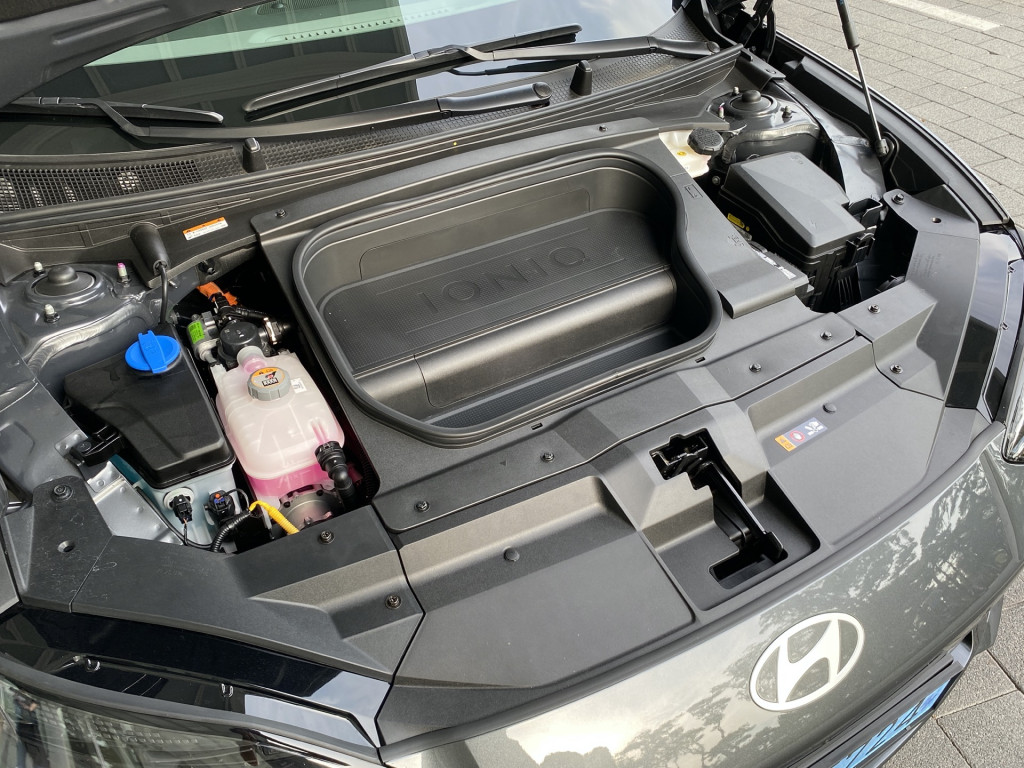
2023 Hyundai Ioniq 6 first drive – South Korea
There is a frunk, but it’s essentially a small storage bin, good for charging cables or maybe a laptop bag. The trunk isn’t very deep—just enough for grocery bags, although it’s wide and long.
Not a sport sedan but nicely balanced
Rear-wheel-drive single-motor versions of the Ioniq 6 make 225 hp and 258 lb-ft and all-wheel-drive dual-motor models make 320 hp and 446 lb-ft. Hyundai claims a 0-62-mph acceleration time of 7.4 seconds in single-motor form and 5.1 seconds in dual-motor form, although its factory acceleration times are typically conservative.
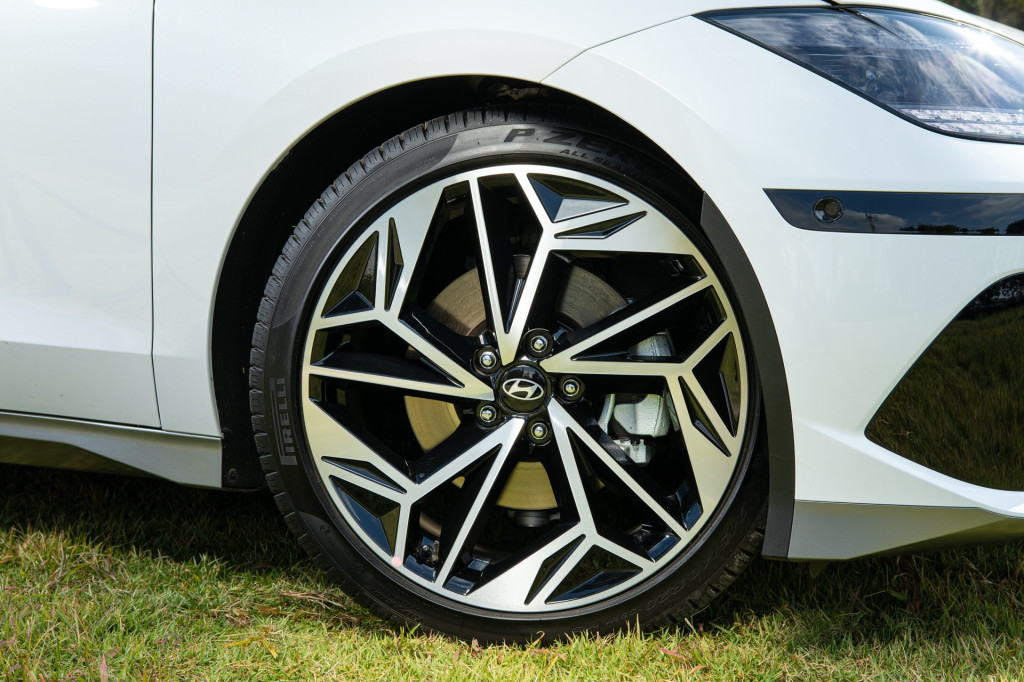
2023 Hyundai Ioniq 6
Our well-equipped dual-motor model with 20-inch wheels felt plenty quick in this world of “instant torque,” and the motors and traction system never needed the Pirelli P Zeros to scramble for grip. What would this vehicle be like with a firmer suspension and the higher-output 576-hp dual-motor layout of the Kia EV6? While exact horsepower figures are still TBA, that vehicle is in the works as the Ioniq 6 N. It’s one to look forward to, given the Ioniq 6’s lower, more planted feel.
The Ioniq 6 is by no means firmly tuned. We’d call it a scosche firmer than the 5, but since you’re lower you don’t feel the roll as much. Steering feel is light and easy, and it returns to center well. It’s at its best in tighter corners, where it weights up nicely, but it could use a little more precision in how it unwinds out of them. Versus the Ioniq 5 and pretty much the whole cohort of electric crossovers, you sit more in the car rather than on it—and that makes a huge difference in perception as you corner quickly and enjoy driving.
The 6 gets hydraulic bushings in back to help soak up road harshness, as well as frequency-sensitive shocks with variable flow paths, to allow them to react differently to varied inputs. The integrated drive axle has a hub-integrated outboard joint to help aid stiffness. The Ioniq 6 also uses low-noise tires, a carpet/floor that’s decoupled from the structure, and various sound-absorbing materials. Acoustic glass is used for the windshield and front and side door glass, and smooth shielding keeps the underbody free of turbulence.
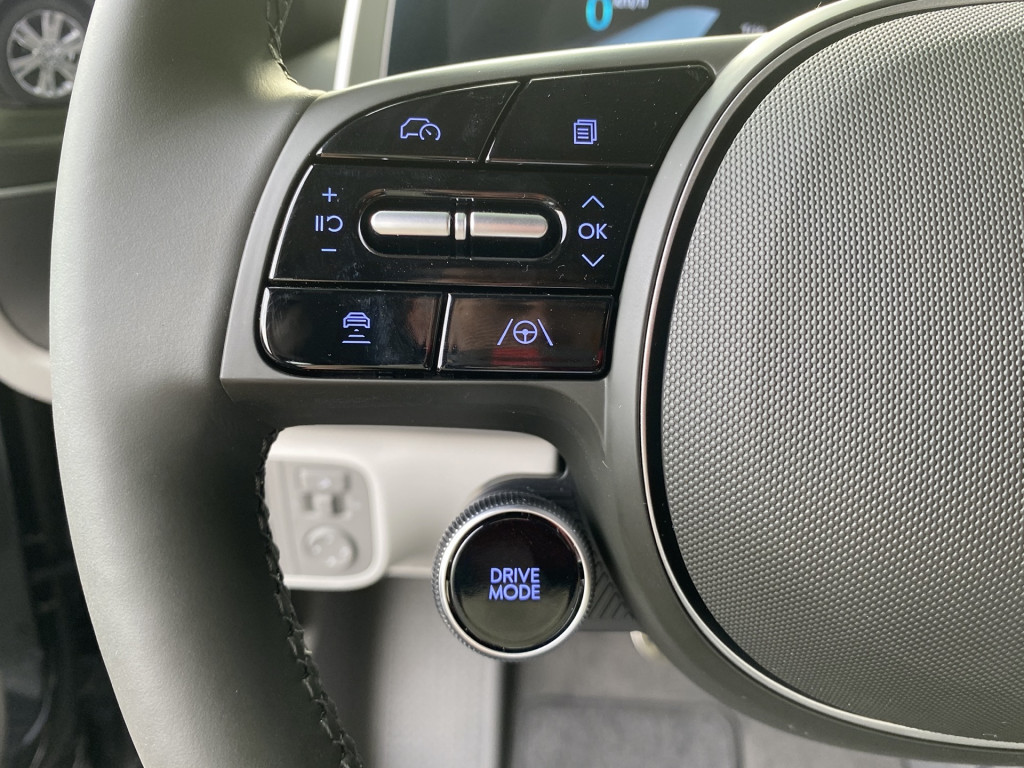
2023 Hyundai Ioniq 6 first drive – South Korea
Four levels of regenerative braking, all steering-wheel paddle-selected, plus smoothly blended brakes make it easy to find the best experience for each driver. An Auto Hold mode simply toggles on and off with its own button, allowing drivers to give the brake pedal a rest in traffic as desired. Hyundai also provides Eco, Normal, Sport, and Snow modes, as with the Ioniq 5, but new to the Ioniq 6 is an EV Tune-up feature that allows the owner to tweak more of the settings individually—including steering, acceleration sensitivity, and horsepower.
As I tested the Ioniq 6, it likely has a curb weight of around 4,500 lb, which is several hundred pounds heavier than the Model 3 Long Range.
Tech, some of it inbound
My test car—actually, all the test cars—had a tech item that won’t come to the U.S.: camera-based side rearview mirrors. With screens mounted at the edge of the dash, on wings that extended upward from it. The setup gives drivers a wider angle of view than standard rearview mirrors. I found it a lot easier to get used to than the screen-based center rearview mirrors offered in a few U.S. models. My only caveat is the boxy execution of the camera unit on the outside; it didn’t fit in with the rest of the coordinated, super-aero design. We’ll take our standard mirrors and grin, thank you.
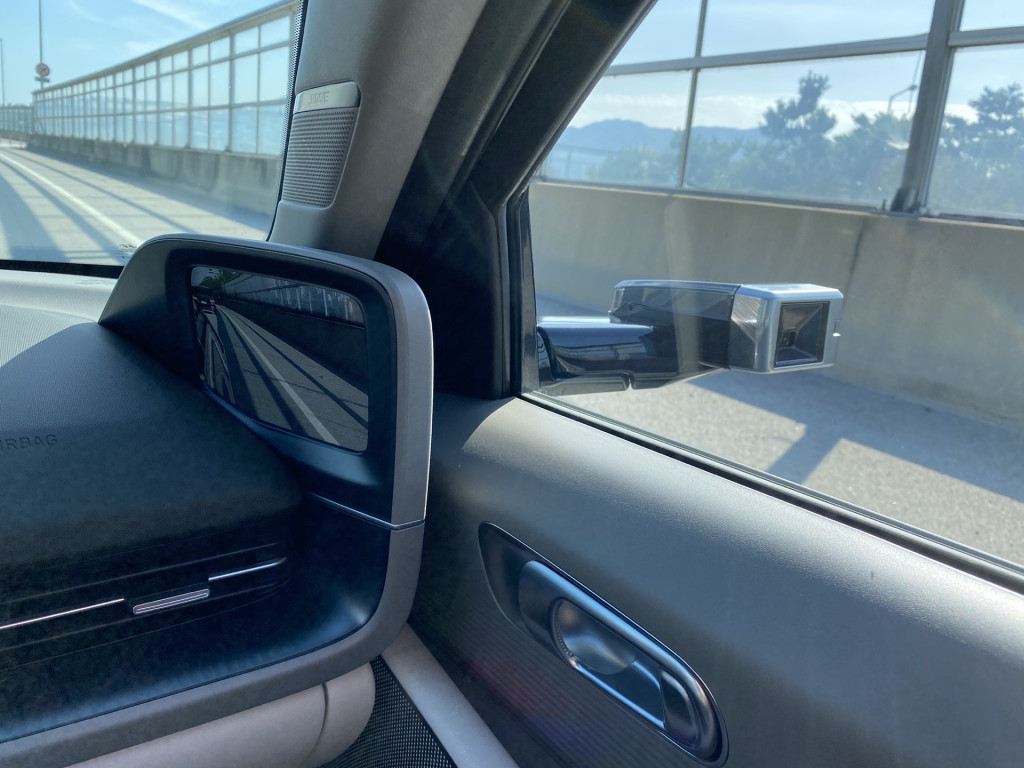
2023 Hyundai Ioniq 6 first drive – South Korea
The Ioniq 6’s 800-volt charging capability means that, like the 5, it will be able to take advantage of 350-kw DC fast-charging stations, getting either of its battery packs from 10% to 80% in just 18 minutes. Both a heat pump and battery heating system are included, as is a new preconditioning system that should make peak charge rates easier to access in chillier weather.
With its 11-kw onboard charger, the Ioniq 6 can get a full charge in about six hours for the Standard pack or about eight hours with the Long Range pack—eight and 12 hours, respectively, with more common 7.0-kw garage wallboxes. It comes ready for bidirectional charging and will feature a similar Vehicle to Load (V2L) connector allowing owners to power appliances or camping equipment, or to slow-charge another EV.

2023 Hyundai Ioniq 6
Hyundai hasn’t provided much guidance on the base price of the Ioniq 6, which will arrive in early 2023 for North America, after a rollout in Korea this fall. But to combine a few hints from company officials, we expect it to start slightly lower than the Ioniq 5 but top out somewhat higher in its top-performance Ioniq 6 N form. Think $40,000 to $65,000, approximately. This isn’t going to be an expansive luxury car, but it feels like it.
Most importantly, the arrival of the Ioniq 6 will finally provide competition for the Model 3. Provided Hyundai builds enough of these, we’re eager to see how this rivalry plays out.
–
Motor Authority accepted travel, meals, and accommodations in a very tall building to bring you this report.
[ad_2]